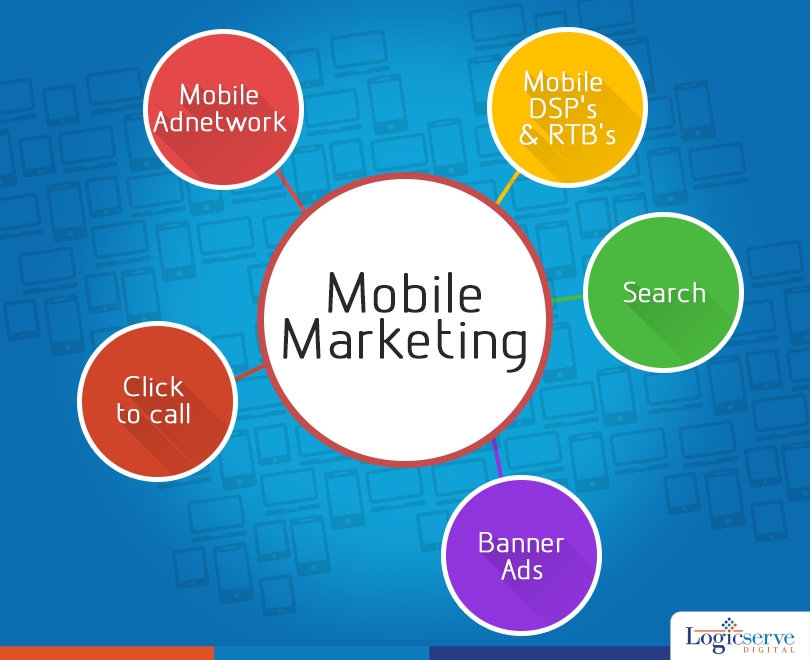With 1.3 billion Facebook users and more than 500 million Twitter users, marketers are increasing their focus on online advertising to reach the billions of customers who are always online. While 81% of people in the 25 to 34 age group in the U.S. own a smartphone, 70% of teens do so and about half of the people who are 55 and older own a smartphone. No wonder about 751 million Facebook users access the social network from a mobile device one time or the other while nearly 200 million FB users access it exclusively from a mobile device. Nearly a quarter of Americans connect to the Internet only from a mobile device.
Geographies
The Asia Pacific region has the most mature mobile advertising markets represented by Japan and South Korea, two nations that have had historically high adoption rates of handsets.
However, North America and Europe will see enormous growth in mobile advertising simply because of the huge advertising budgets of the companies located in these two continents. As the developing economies of China and India grow, so will the sales and penetration of smartphones in these two nations leading to a simultaneous growth in mobile advertising. Russia and Brazil are a couple of other countries that will witness good growth rates of mobile advertising, particularly in 2015 and beyond.
Types — Display Ads Vs. RTB
Among the different mobile advertising options, display advertising is a preferred format of digital marketers. It’s expected to hit $74.4 billion in 2016 with an annual growth rate of 21% per year. Programmatic buying such as Real Time Bidding (RTB) is helping the growth of display advertising. Social media platforms such as Facebook and Twitter are benefiting from the growth of RTB and enjoying growth rates of 29% per year. RTB is expected to keep growing and reach $8.69 billion by 2017, according to eMarketer, constituting 29% of total digital display ad spending. Other studies by IDC shows that RTB is expected to reach $20.8 billion worldwide by 2017. For example, programmatic advertising in the U.S. is expected to grow from $2 billion in 2012 to $14.4 billion in 2017 maintaining a scorching pace of growth of 48% per year. Western Europe and Japan will also see similar growth in RTB as a form of display advertising.
Mobile advertising is witnessing six times faster growth rates compared to desktop online advertising. And in the U.S. in particular, RTB on mobiles is expected to reach $1 billion in 2015 and $3 billion in 2017. The Weather Channel gets 600 to 700% higher click through rates on mobile display ads compared to desktop ads.
Mobile Video Ads
Mobile video ads are growing fast and becoming a significant part of mobile advertising. Tablet users are the ones who tend to watch longer videos. Mobile video ad expenditure amounted to half a billion dollars in 2013 which was 13% of the total digital video ad market.
With the rise in popularity of mobile video ads, marketers are coming up with clever product promotion videos. Think of viral videos such as the Game of Thrones and House of Cards mash-up which was a promotional campaign; another marketing video which went viral was 20 strangers kissing and yet another was a fake job ad for the toughest job in the world which was a marketing video for an e-greeting card company on the occasion of Mothers Day.
SMS
This is an effective advertising format over mobiles as 90% of text messages are read within three minutes of delivery and 95% of mobile users can be reached by brands using SMS advertising. A February 2013 report by Mobile Marketer says that 42.3% of consumers prefer SMS deals over bar-code scans or push message coupons.
Mobile Search Ads
Since 70% of searches on mobiles lead to action within one hour, search ads on mobile platforms are more effective than search ads on desktops.
Mobile couples also enjoy higher rates of redemption compared to print coupons.
Click To Call
Lots of smartphone users perform local search on their smartphones. Up to 95% of smartphone users have looked up local information over the internet using their smartphones. Out of them, 61% proceeded to make calls to the business establishment. Hence, click to call features should be prominently displayed in mobile websites as well as in any form of a mobile advertisement.
LogicSpeak:
Hence the bottom-line is a continuing growth of mobile devices and mobile ads which will continue for the foreseeable future.
Previous Post: Tips to Increase Blog Traffic





